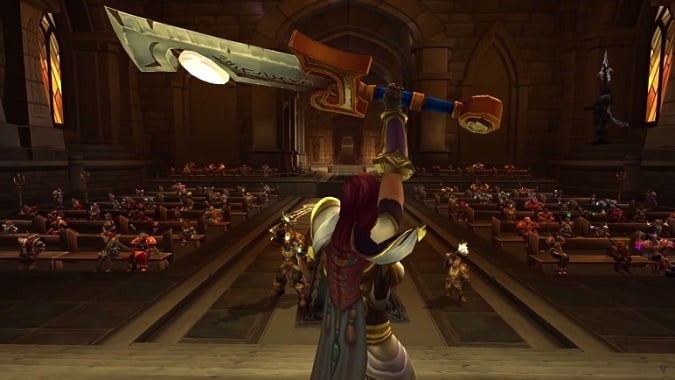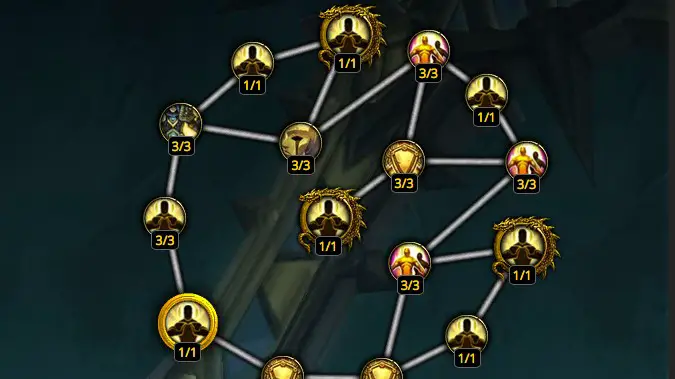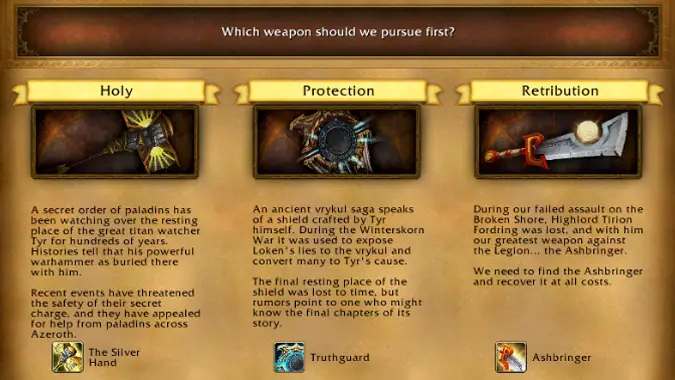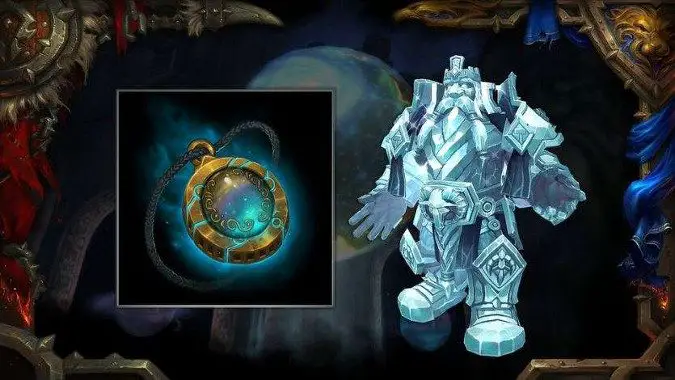Blizzard learned from the mistakes of Artifacts to make the Heart of Azeroth

As they plan a new expansion, the World of Warcraft developers look at the current expansion’s systems. They ask themselves what worked, what didn’t and how they can use those answers to make the next expansion better. It’s one of the things which produces the signature Blizzard shine and brings me back to their games again and again.
When the team applied this approach at the Artifact system, what did they find?
Ion Hazzikostas, in an interview with Jesse Cox, said Artifacts provided a “universal goal” and an “extra progression path.” He loved how Artifacts filled these roles. Every activity from PVP to Raiding to World Quests provided a reward that players valued. It helped to keep the endgame diverse and exciting. It gave players a something to purse past max level.
But Artifacts weren’t perfect.
The trouble with Artifacts
In the World of Warcraft: What’s Next panel at BlizzCon, Ion highlighted the issues with the Artifact system: linear progression, specialization choices, and inventory clutter. Russel Peterson, Lead Designer for World of Warcraft, also highlighted the same three weakness during the Game and Systems Deep Dive panel.

Problem #1: Linear progression is boring
At the start of Legion, our shiny new Artifacts had an amazing research tree of traits to choose from. These provided different paths for each player to express their own playstyle and preferences. If this sounds familiar, those are the same features touted for the Azerite items in Battle for Azeroth. It worked in Legion, at least for a little while. Like most attempts at customization, players solved for the ideal path through the tree. Detailed maps appeared on all the usual sites (including ours) for each Artifact and became the “right” way to fill out the tree.
Once we got through the initial push through the tree making choices, the path got more and more linear, ending in a continuous dump into a super trait. Patch 7.2 added a few more traits to chose from. With those filed out, we were again back to the continuous dump.

Protection is the only answer.
Problem #2: You had to pick a speciality
The pace of gaining new traits at low Artifact Knowledge levels forced players to make hard choices between their specializations. Tanks and Healers had to chose between empowering their DPS Artifact to level and preparing their intended Artifact for the end game. It also affected players who changed roles during the expansion as the needs of their team changed. Anyone who changed specializations as the inevitable nerf and buff cycle played out over the expansion also felt the effects. Interesting decisions can be the life blood of good game play. The problem with Artifacts was those decisions carried with us far too long.
Problem #3: All of that inventory clutter
Artifact Power items lived in the player’s inventory. This allowed you to use them on a different Artifact than the one you had equipped when you got the item. At the end of several World Quests or dungeon runs, the AP items of varying amounts would be all over your inventory filling up your bags. They were hard to find and hard to use.
Problem #4: The grind never stopped
One glaring omission from the developers was how Artifact Power became a tedious grind for too many players. While Artifact Power had a universal appeal, the lack of any weekly cap created a pressure to grab as much as you could as fast as you could. Players found the most efficient means of farming Artifact Power. They gamed the system. “Maw runs” turned in a unit of measure until it was patched. This brought differences in available play time into sharp focus. Players who could play more hours had more Artifact Power than those with less play time.

The Heart of Azeroth fixes (some) Artifact annoyances
In his interview with Jesse Cox, Ion called the Heart of Azeroth a combination of Legendaries and Artifacts. It provides an extra progression path as well as a way to customize your character. Russel Peterson agreed, saying that they wanted something to fill the niche of a universal goal to keep the endgame diverse.
Azerite is the new Artifact Power. The developers liked how we got AP. It made all end game activities rewarding to some degree. We will get Azerite from many of the same sources like PVP, World Quests, Raids, and Dungeons. New Battle for Azeorth activities like Island Expeditions and Warfronts will also award Azerite.
This new system addresses the weakness of of the specialization choice as it disconnects the Heart of Azeroth’s power-ups from the player’s specialization. It empowers every spec of the player the same way. There is no trait tree; there are no long lasting choices. Azerite items define the lifetime of the decisions: when you replace that item, you’ll make new choices.
It addresses inventory clutter as there will be no Azerite items, nothing to click on. Azerite will flow into the Heart of Azeroth like experience points, or the old Valor points.
But it doesn’t address linear progression. The Heart of Azeroth is by definition a linear progression system. It also doesn’t change the grind — only changes what you’re grinding for. It’s likely players will discover the most efficient way of getting Azerite. We will once again game the system to acquire as much Azerite as fast as possible. The developers should consider a daily or weekly cap on the amount of Azerite you can get.
You can see some of the lessons learned from Artifacts in the design of the Heart of Azeroth. It should help players as they level through Battle for Azeroth as well as help players changing specializations later in the expansion. The developers will be challenged to find a good middle ground where Azerite gains are desirable without becoming an all consuming grind.
Please consider supporting our Patreon!
Join the Discussion
Blizzard Watch is a safe space for all readers. By leaving comments on this site you agree to follow our commenting and community guidelines.
 @honorshammer
@honorshammer



